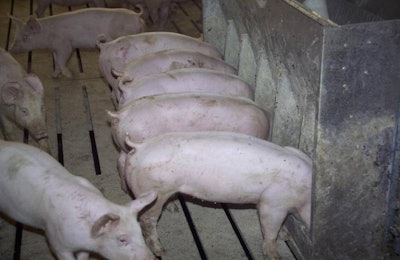
Germany recorded a slight drop in national output of compound feed to 23.39 million metric tons (mmt) for the most recent grain marketing year, July 2015 to June 2016. According to the country’s animal nutrition organization, DVT, this figure represents a reduction of 0.7 percent from the previous year’s figure of 23.56 mmt.
While these figures are provisional, DVT highlights the differing fortunes in the country’s regions and between livestock sectors. Northern states where livestock production is concentrated – such as Lower Saxony and North Rhine-Westphalia – registered a slight increase in feed output, while those in the south produced lower tonnages. The decline was marked in the East, where production volume was down by 5 percent.
The number of commercial feed mills in Germany at the end of the marketing year was 313, just one fewer than in 2014-15. The figure refers to registered feed mills, which include all those with an annual output of 1,000 metric tons (mt) or more. Seventeen mills in Germany produced more than 300,000 mt feed during the year.
In the introduction to the organization’s latest annual report, DVT president Jan Lahder called for quality control systems to be strengthened and simplified throughout the supply chain. Clarification of the feed sector’s responsibilities in the production of foods free of genetically modified organisms (GMOs) is required, he said, as well as standardization of fees for the control of goods moving between German states.
Pigs: Top species by German feed output
The challenges facing the dairy sector worldwide had less impact on total feed production in Germany than might have been expected, according to the CEO of DVT, Dr. Hermann-Josef Baaken.
Pigs represent the top livestock species in Germany in terms of compound feed production, but there were regional differences that reflected pig numbers, he said. For calendar year 2015, 41 percent of total feed production, or 9.6 mmt, was destined for the country’s pig herds – a slight reduction from the 9.7 mmt the previous year.
Falling from 7.2 mmt in 2014 to 6.5 mmt last year, cattle feed output was down significantly, reflecting the difficulties experienced by the dairy industry.
For the poultry sector, increases of, in round terms, 100,000 mt was recorded for the poultry meat and egg subsectors, reaching 4.1 mmt and 2.3 mmt, respectively, in calendar year 2015 compared with 2014.
Basing their figures on grain marketing year, DVT says that feed production for meat poultry recorded a drop in sales in 2015-16, owing to an abrupt halt in growth in this sector after years of expansion. Layer feed output increased, however, reflecting the recovery of this sector in Germany last year.
Baaken is cautiously optimistic for the year ahead, citing the good availability of feed raw materials in the main production areas, and early signs of a recovery in milk prices and better prospects for the pork sector.
“For farmers, this means there are good opportunities to secure favorable contracts with their feed suppliers over the coming months, after the domestic grain harvest is completed,” said Baaken.
Germany remains the top animal feed producer in the European Union, but in 2015, Spain overtook France for the first time to take second place in the EU feed production rankings, according to CESFAC, the Spanish confederation of compound feed manufacturers.















